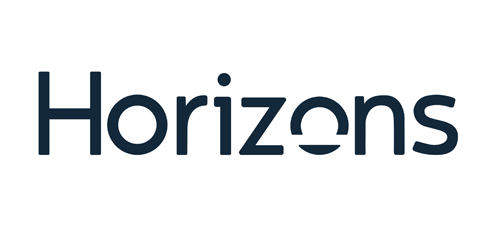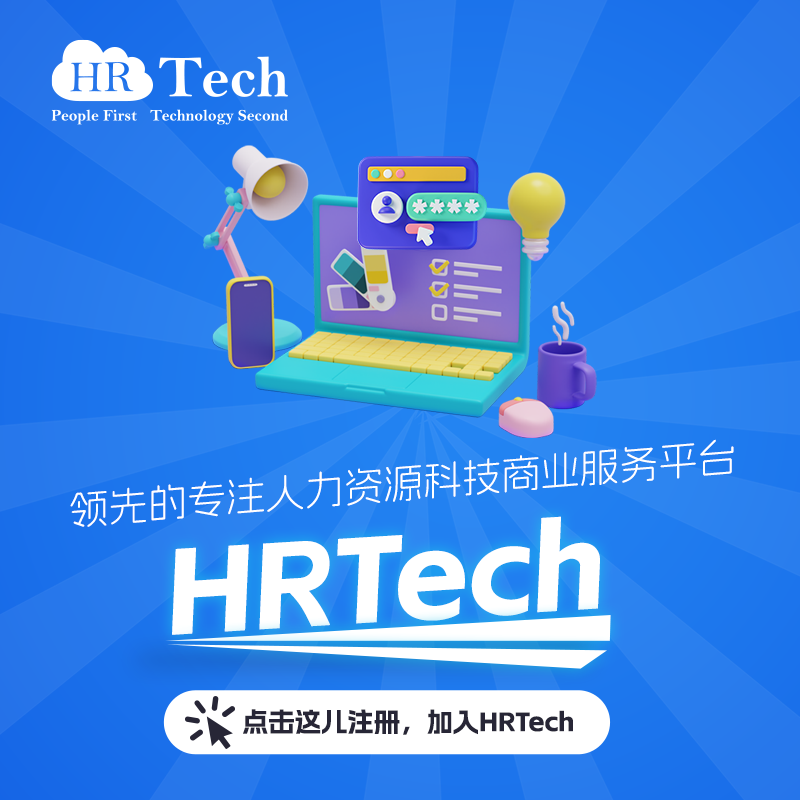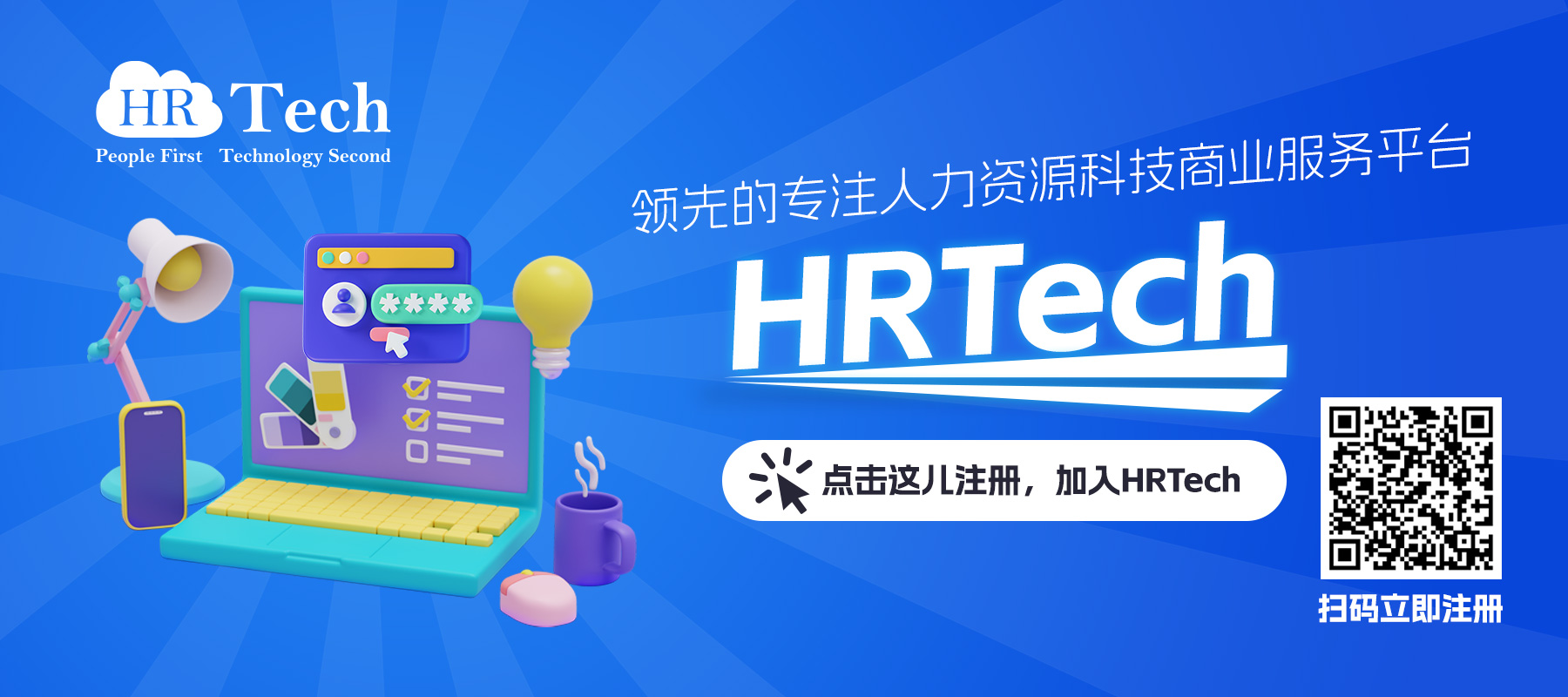-
 资讯
资讯
【波兰】混合数字教育平台Coding Giants获得850万欧元融资,用于在全球推广数字教育
Coding Giants 是波兰一个向儿童和青少年传授编码技能的混合数字教育平台,公司已完成一轮 850 万欧元的投资,由 True Global Ventures (TGV) 领投。PortfoLion Capital Partners 也参与了本轮融资。
本轮融资将支持该公司的全球扩张,尤其侧重于覆盖美国的西班牙语社区,并加强其人工智能驱动的教育技术。
该平台让年轻的学习者掌握基本的数字技能,为他们迎接日益由技术塑造的未来做好准备。联合创始人兼首席执行官拉多斯瓦夫-库列萨(Radosław Kulesza)在强调这一使命时说: “正如我们在科学课上学习物理环境一样,我们必须充分了解我们周围的数字环境。我们的目标不仅仅是培养未来的程序员,而是帮助每个人轻松、安全地适应技术。
据 Coding Giants 称,继在国内市场取得成功之后,这家初创公司又在国际市场进行了扩张,在西班牙和意大利取得了成果,收入同比增长了四倍。这项最新投资将加速 Coding Giants 在 2025 年向德国和美洲市场的扩张,并在随后几年向其他国际市场扩张。
“Coding Giants 强大的市场地位和利用包括人工智能在内的顶尖技术丰富人与人之间互动的独特方法,使其在数字教育领域独树一帜。TGV 创始合伙人 Konrad Wawruch 现在加入了 Coding Giants 的监事会。“我们很高兴能支持他们为下一代的未来做好准备的使命,他们在国际市场上每年增长 5 倍,总体增长 80%,资本效率惊人。
PortfoLion Capital Partners 曾于 2023 年初领投了 350 万欧元的一轮投资,本轮投资中再次确认了对他们的支持。PortfoLion 的负责人 Zsolt Mihály 评论说: “Coding Giants已经展示出了非凡的成长性和可扩展性。他们在波兰、西班牙和意大利取得的成绩验证了其在国际上取得成功的潜力。
公司还在推进其人工智能驱动的学习管理系统(LMS),引入了人工智能辅导员,通过为培训师提供实时指导和监控实时课程来提高学生的学习效果,从而增强学习体验。首席营收官 Dawid Leśniakiewicz 强调了这一创新: “我们的人工智能辅导员将重新定义编码教学方式,在全球范围内确保质量和可及性"。
关于Coding Giants
Coding Giants 成立于 2017 年,专注于为 6-19 岁的学生提供混合编码教育。该平台在 12 个国家开展业务,将现场课程与数字学习材料相结合,为不同年龄段的学生提供灵活、高质量的体验。自成立以来,Coding Giants 已教授了近 20 万名学生,目前有 1.5 万名在读学生。
-
 资讯
资讯
数据驱动人才管理:人力资源分析的关键要点
人力资源专业人员对各种优先事项并不陌生--无论是招聘顶尖人才、制定员工发展战略,还是紧跟行业变化。然而,在所有这些需求中,有一个改变游戏规则的因素却常常被忽视:数据分析。然而,如果这个被忽视的方面正是将人力资源部门从传统的业务角色转变为企业内部战略力量的关键所在呢?
当今的企业比以往任何时候都更加依赖数据,人力资源部门也不例外。人力资源部门只负责招聘和解雇的时代已经一去不复返了。现在,它在推动业务增长方面发挥着至关重要的作用。这种转变的关键是什么?人力资源数据分析。通过利用这一丰富的洞察力来源,人力资源领导者可以做出更明智的、以数据为导向的决策--无论是提高员工敬业度,还是微调人才招聘战略,以实现真正的、可衡量的结果。
随着企业越来越重视数据驱动型战略,人力资源部门的角色也在不断演变。借助人工智能(AI)和机器学习(ML)等先进技术,人力资源专业人员现在拥有了实时收集和分析复杂数据集的工具,从而能够做出积极主动、有数据支持的决策。根据德勤的数据,71% 的公司已经认识到人员分析的重要性,近三分之一的公司将其评为业务中 “非常重要 ”的优先事项。
从优化晋升和薪酬到降低离职率和加强培训计划,数据分析正在重塑人力资源部门对员工旅程的影响。通过利用人工智能驱动的分析技术,人力资源团队可以超越直觉和主观评价,做出精确、基于证据的决策,不仅影响个人职业生涯,还影响整个组织未来的成功。
人力资源数据分析的定义
人力资源数据分析,通常被称为人员分析,是利用特定的人力资源指标收集、分析和解释与劳动力相关的数据的实践。将其视为一种以数据为导向的了解员工的方法--超越直觉和假设,发现具体的见解,从而改善人力资源管理的各个方面。
人力资源数据分析的核心是收集有关员工参与度、保留率、招聘成功率和绩效管理等关键领域的信息。通过利用这些数据,人力资源领导者可以做出明智的决策,推动有意义的变革,无论是提高员工满意度、提高生产率,还是完善人才招聘战略。
过去,人力资源决策主要基于直觉和经验。但如今,工作场所的数字化转型开创了一个以数据为中心进行决策的新时代。有了丰富的数据,人力资源部门可以在业务增长中扮演更具战略性的角色--利用分析来微调流程、预测趋势,并最终支持组织的长期目标。
简单地说,人力资源数据分析将劳动力数据转化为可操作的洞察力,使您能够从被动决策转变为主动决策。这意味着人力资源团队可以准确定位真正影响员工满意度的因素,优化学习和发展计划,并为留住顶尖人才量身定制战略,而这一切都基于确凿的数据而非直觉。结果如何?一个更加灵活、以数据为导向的人力资源部门,直接为企业的成功做出贡献。
人力资源数据分析的应用
人力资源数据分析远非一个放之四海而皆准的解决方案。它提供了一个多功能工具包,可战略性地应用于各种人力资源职能,从而实现有意义的改进。让我们探讨一下人力资源数据分析如何在多个领域产生重大影响:
1. 增强核心人力资源职能
人才招聘: 试想一下,通过分析以往优秀员工的特质,就能准确定位理想的候选人。人力资源分析使招聘人员能够确定最有效的人才来源、预测招聘时间并完善招聘策略。通过利用数据,人力资源团队可以缩短招聘时间、降低招聘成本,并吸引更符合公司文化的候选人。
绩效管理: 告别过时的年度绩效考核。通过实时分析,人力资源团队可以持续跟踪关键绩效指标(KPI),为管理者提供可操作的洞察力,用于持续反馈和发展对话。这将带来更有意义的评估,并使个人目标与组织目标更加一致。
2. 应对特定的人力资源挑战
人力资源分析在应对特定劳动力挑战方面大放异彩。以下是一些有针对性的应用:
预测员工流失: 通过综合分析人口统计数据、绩效考核和薪酬指标,人力资源团队可以预测离职风险,并积极实施留任策略。这种以数据为导向的方法有助于降低员工流失率以及与员工替代相关的成本。
数据驱动的招聘评估: 超越传统的简历和直觉。分析可以通过分析历史绩效数据来加强招聘评估,使人力资源团队能够设计量身定制的面试问题,从而发现最合适的候选人。这样就能确保更稳健的选拔流程,更有效地识别顶尖人才。
优化人才管理: 通过数据分析识别高潜质员工,充分挖掘员工潜力。通过利用洞察力,人力资源部门可以制定个性化的发展计划,建立稳固的继任渠道,确保企业做好准备,满足未来的领导力需求。
3. 推动战略性人力资源计划
除了日常运营,人力资源分析在战略决策中也发挥着至关重要的作用:
定制培训与发展: 数据分析有助于确定员工队伍中的技能差距,使人力资源部门能够设计有针对性的培训计划,满足特定需求。通过衡量这些计划的影响,企业可以确保在员工发展方面的投资获得稳健回报。
薪酬分析与优化: 要想在就业市场上保持竞争力,就必须建立公平、有吸引力的薪酬结构。人力资源分析可深入了解企业内部和整个行业的薪酬趋势,帮助企业找出薪酬差距,优化薪酬方案,留住顶尖人才。
预测未来劳动力需求: 利用分析预测未来的技能需求和人才要求,从而领先于劳动力趋势。这种积极主动的方法使企业能够制定战略性招聘计划和技能提升计划,确保拥有合适的人才来推动未来的发展。
4. 采用人力资源分析的好处
人力资源分析不仅是一种工具,它还能改变游戏规则,将人力资源从支持职能转变为战略业务合作伙伴。具体如下
改进决策: 通过分析数据,人力资源团队可以做出更明智的、以证据为基础的决策,从而加强招聘工作、降低人员流动率并优化员工参与战略。
降低成本: 数据驱动的洞察力能揭示效率低下的问题,使人力资源部门能够简化流程、减少浪费并更有效地分配资源,从而节省大量成本。
增强员工体验: 通过数据了解员工的喜好和痛点,人力资源部门就能创造更有吸引力的工作环境,从而提高士气和生产力。
强化雇主品牌: 分析可以突出吸引顶尖人才的因素,使人力资源部门能够完善雇主品牌战略,吸引最优秀的求职者。
顶级人力资源数据分析工具
Visier
Visier 是人工智能驱动的人员分析、劳动力规划和薪酬分配领域的全球领导者。该公司的解决方案为企业提供劳动力人工智能优势,利用人工智能驱动的功能帮助领导者更深入地了解人员与工作之间的关系。这使企业能够提高员工的工作效率,并迅速适应变化。Visier 技术的核心是其实时人员数据平台,该平台利用人工智能释放人员和工作数据的变革潜力,推动战略性业务成果的实现。
Workday
Workday 是为财务和人力资源设计的企业云应用程序的领先供应商。公司的解决方案使企业能够在快速变化的环境中适应并发展壮大。Workday 的产品组合包括财务管理、人力资源、计划、支出管理和分析,其核心集成了人工智能和机器学习。这项技术通过提高效率、敏捷性和数据驱动决策,使全球组织能够拥抱未来的工作。
Oracle Fusion Cloud HCM
Oracle Fusion Cloud HCM是一个全面的云解决方案,它整合了每个人力资源流程,并将企业中的每个人联系在一起。它提供统一的用户体验、一致的数据模型以及由人工智能嵌入式基础架构支持的无缝流程。Oracle云HCM使企业能够打造一个让员工感到被重视、被倾听、被包容的社区,帮助企业重新定义卓越的劳动力管理。
SAP SuccessFactors
SAP SuccessFactors HCM 是一套全面的人工智能云人力资源解决方案,旨在推动全球范围内员工和企业的成功。该套件支持 200 多个国家和地区,提供的功能涵盖核心人力资源和薪资、人才管理、分析和规划以及员工体验管理。SAP SuccessFactors 可帮助企业优化人力资源流程,提高整体员工效率。
实施人力资源数据分析: 人力资源领导者分步指南
准备好释放数据的力量,将人力资源职能转变为企业成功的战略驱动力了吗?实施人力资源数据分析似乎令人望而生畏,但只要方法得当,它就能提供深刻的洞察力,从而塑造企业的人力战略。以下是一份简化路线图,助您开始数据驱动的人力资源之旅:
1. 从正确的问题开始
在深入研究数据之前,必须明确自己的目标。首先要提出与人力资源挑战和更广泛的业务目标相一致的正确问题。例如
影响企业员工流失的关键因素是什么?
如何提高员工参与度和工作效率?
哪些招聘渠道能为我们的特定需求提供最佳人选?
这些有针对性的问题有助于指导您的数据收集工作,并确保您的分析计划专注于解决现实世界中的人力资源问题。
2. 数据选择和清理
下一步是从各种人力资源系统中收集相关数据,如人力资源信息系统(HRIS)、薪资软件和绩效管理工具。然而,仅有原始数据是不够的。
数据质量很重要: 确保收集到的数据准确、完整且最新。清理数据集,删除重复数据、纠正错误并统一格式。这一关键步骤可为可靠的分析奠定基础,并防止得出误导性结论。
3. 数据分析
有了干净、高质量的数据之后,就该进行深入分析了。利用现代人力资源分析工具和软件来检查数据、发现趋势并提出见解。需要考虑的关键技术包括
描述性分析: 了解过去的绩效和趋势(例如,分析历史自然减员率)。
预测分析: 根据当前数据预测未来结果(如预测员工流失风险)。
规范性分析: 提出优化人力资源实践的可行策略(例如,员工发展的个性化学习路径)。
这一阶段是数据从数字转化为可操作智能的阶段。
4. 将洞察力转化为可操作的策略
数据分析的价值在于它所激发的行动。一旦确定了趋势和见解,下一步就是将这些发现转化为具体的人力资源战略。
结论
虽然人力资源数据分析正在改变企业管理员工的方式,但必须记住,人的因素仍然是人力资源的核心。这些智能指标提供了丰富的洞察力,但它们的真正价值在于如何加强而不是取代人的决策。通过利用分析为从人才招聘到组织设计提供信息,人力资源领导者可以制定出不仅能优化绩效,还能提升员工体验的战略。
随着预测分析重塑劳动力规划,人力资源专业人士拥有了一个独特的机会,使他们的战略与未来的组织需求保持一致。这包括设计能够利用新兴技能组合的职位、促进员工发展,以及确保人才能力与业务目标之间的无缝对接。
人力资源自动化的趋势日益明显--全球近 40% 的公司正在实现关键职能的自动化--这凸显了人力资源团队建立分析专长的必要性。这不仅仅是收集数据的问题,更重要的是要具备对这些信息进行有效解读、管理和行动的能力。提高数据挖掘、机器学习和商业分析等领域的技能,可以使人力资源专业人员成为企业的战略合作伙伴,通过数据驱动的智能提升竞争优势。
在这个以数据为中心的时代,人力资源部门的使命非常明确:在拥抱分析能力的同时,保持人性化的管理。通过将数据洞察力与以人为本的方法相结合,人力资源领导者可以驾驭现代劳动力的复杂性,推动业务的可持续增长。
-
 资讯
资讯
Josh Bersin:效率革命,掌握AI转型的四个生产力阶段
本篇文章强调了人工智能不是替代工作,而是赋能“超级员工”,提高工作价值和薪酬,为企业创造更多价值。作者还提到正在进行的研究,并预告了即将发布的《2025预测报告》。接下来让我们一起看看以下文中讲述的内容。
我们在技能和工作设计方面做了大量咨询工作,现在人工智能工具已经到来,我们正在以前所未有的速度重塑工作。因此,让我来谈谈对这一过程的一些看法,你也可以从我最近的播客中了解更多。
众所周知,人工智能商业工具有很多种: Copilots、Assistants、Agent、Talent Intelligence Systems 和嵌入式应用。每种产品都建立在人工智能优先的基础上,并通过领域专业知识、用例分析和迭代设计来构建越来越智能的系统。
自动驾驶汽车从语音助手、自动刹车和车道警告开始。现在,它们能让你保持在车道上行驶,并在限速发生变化时减慢车速。很快,它们就会为我们开车,这样我们就可以坐在后座上看书了。
我们的人力资源助理伽利略最初只是一个研究和解决问题的工具,现在正迅速成为一个人工智能教练、基准工具、招聘和变革管理系统。因此,随着时间的推移,所有这些工具都从简单的用例发展到更深入的应用和自主性。
随着工具越来越智能,领域越来越聚焦,我们将不得不重新思考我们的工作和业务流程。与ERP不同的是,在ERP中,我们基本上是通过培训让人们 “采用 ”系统,而现在,许多突破性的应用都是自下而上的。个人将发现人工智能的能力,然后以越来越创新的方式加以应用。
随着时间的推移,随着人工智能变得越来越智能,我们的工作将更多地转向人工智能的 “监督者 ”和 “培训者”,而不仅仅是消费者。例如,如果我们的自动驾驶汽车走了一条崎岖不平的路,我们可以 “重新训练它”,让它走一条更长但更平坦的路。
正如我在播客中所讨论的,我认为目前的应用分为四个阶段。而我们正同时处于这四个阶段之中。
第一阶段:让现有工作更轻松。(同样的工作,更好的工具)。
这时,我们点击 Microsoft Copilot 或 Zoom 或 Teams,系统就会在我们的帮助下分析会议、总结邮件或撰写文档。我们的工作方式和以前一样,但现在有了 “超级生产力 ”工具,工作变得更轻松了。这些 “附加 ”用例层出不穷,而且已经让人感觉它们是一种商品。
在大多数情况下,员工可以看到 10-15% 或更多的改进,但生活并没有太大的不同。有时,工具会拖慢我们的工作进度(Copilot 还不能很好地创建幻灯片),甚至会妨碍我们的工作。但我们可以期待这种模式继续下去,我们中的大多数人都能自己解决这个问题。
第二级:主要步骤被省去,但工作还是一样。(同样的工作,工具消除了工作)。
在第 2 级,我们实现了大量自动化。软件工程师现在 70% 的代码都是使用协同工作开发的,因此他们需要花更多时间来测试和提示人工智能。他们的个人编码技能可能会萎缩,但现在可以处理更多的架构问题。
软件工程师的 “工作 ”可能还是一样的,但产出要大得多。因此,我们拿着同样的薪水,做着同样的工作,但使用的却是高度自动化的工具。
这包括芯片设计师、软件工程师、超市收银员、护士排班,甚至是招聘助理。例如,Paradox 的客户在招聘时几乎不需要 “排班助理”。
在这一层次,公司的生产率可提高 50-75%,并可腾出时间专注于质量管理、客户服务和工具的持续改进。
第三级:与代理合作,重新设计工作。(新工作、重新设计的流程、代理自动化工作)。
在第三级,我们将更进一步:重新设计流程和工作。试想一下,麦当劳是如何用自助服务终端取代柜台员工,消除 "请问您要点什么?
这需要大量的设计工作,但却为餐厅带来了全新的角色、工作流程和管理结构。每个汉堡的成本 "下降了,而顾客体验却几乎一样好(不完全是)。
在这里,我们需要小心谨慎,因为有时 “自助式人工智能 ”体验并不奏效。超市自助结账就是一个很好的例子。它很少能很好地发挥作用,而且通常比排队时间更长。但它会越来越好,由此带来的体验是更快的吞吐量、更多的数据(自助服务代理可能会给你提供折扣,因为它知道你的购买记录),以及远胜于员工的角色。
在第三级中,员工仍然参与其中,我们或多或少是 “与机器一起工作”,为流程提供辅助和支持。
第四级:自主智能代理,人工智能的培训和管理。(新的工作、重新设计的流程、人 “管理 ”代理)。
到了第四级,我们就更进一步了。想象一下,一个人工智能招聘人员(Paradox 就是这样做的)可以给招聘经理和他的团队发送电子邮件,获取有关工作和角色的反馈和要求,整合输入信息,并创建一个完整的描述。然后,该代理可以根据公司文化和薪酬政策对该职位进行审查,将该职位与外部市场上的类似职位进行比较,并调整级别、职位名称和描述,使其具有竞争力。然后,它就可以开始寻找候选人,并向招聘经理和招聘人员提供一组按不同标准排序的候选人。
对于招聘人员来说,这个过程需要几十个步骤,但它可以完全自动化,并得到极大改进。招聘代理甚至可以查看以往的招聘信息,并根据其他候选人的成功案例,更智能地确定招聘对象。
现在,人类的工作就是 “培训”、“监控 ”和 “管理 ”这个人工智能代理,他实际上已经成为了一名数字员工。(注:Salesforce 正在为销售和服务部门打造这一功能。)
超级员工的崛起
我们的观点是,人工智能不是一种 “工作替代 ”技术,而是一种 “超级员工赋权 ”技术。换句话说,这些方案中的大多数方案都会带来更高的工作价值、更高的薪酬,并为企业创造价值(而不是降低成本)。
这种情况正在迅速发生。
我们正在进行这方面的一项大型研究,我将在我们即将发布的《2025 预测报告》中对此做出更多解释。这一切的好处将是提供新的高薪工作岗位,更快地应对业务变化,但也有大量的 IT、设计和数据管理工作要做。但根据我们的研究,这一切很快就会到来。
-
 资讯
资讯
【伦敦】利用AI实现招聘流程业务自动化公司Vente AI获得50万英镑种子轮融资,旨在用自动化技术解决招聘工作的最大瓶颈
总部位于伦敦的初创公司 Vente AI宣布获得了 50 万英镑的种子轮融资。本轮融资由欧洲最活跃的早期风险投资公司Antler领投,包括经验丰富的招聘和整型技术天使投资人Thomas Vose在内的投资人也参与了本轮融资,Thomas Vose的初创公司HireAra最近被Access集团收购。
Vente AI 的创新方法是利用人工智能将招聘工作中最耗时、最昂贵的部分自动化:线索识别、分析和优先排序。
“招聘机构将大约 40% 的时间花在业务开发活动上。Vente AI 的首席执行官兼联合创始人卡梅隆-布里格斯(Cameron Briggs)说:"我们的平台将这些工作减少了 90%,使招聘人员能够专注于建立关系和安排候选人。
英国招聘市场竞争异常激烈,大约有 40,000 家招聘机构--相当于每 140 家公司就有一家招聘机构。相比之下,美国的密度要低得多,每 500 家公司才有一家招聘公司。“布里格斯指出:"英国市场的竞争激烈程度几乎是美国的四倍。他解释说,这种饱和状态对争夺新客户的小型广告公司来说是一个巨大的挑战。
人工智能通过快速高效地识别机会,有可能为竞争创造公平的环境。对于招聘人员来说,Vente AI 的平台可以帮助他们在第一天就识别空缺职位,并根据他们的专长推荐优先级高的职位。
Vente AI 的专有技术可处理大量数据,为招聘人员提供可行的见解。仅在 11 月份,Vente AI 就分析了全球 3800 多万条招聘信息,数据集达 171 亿字。虽然人工智能简化了流程,但布里格斯强调了它的局限性: “招聘不是一个放之四海而皆准的过程。通用的人工智能解决方案无法有效发挥作用。人工智能必须根据每个利基市场的具体需求进行训练,才能取得成效。
该平台的早期采用者已经取得了显著的成功。Vente AI 通过自动进行招聘线索优先排序和分析,创造了超过 30 万英镑的额外收入,处理了 250 名候选人,并节省了 1500 个小时的人工工作。
Vente AI 的平台不仅能提高效率,还能影响更广泛的市场趋势。“我们的平台使招聘人员能够更好地识别和了解哪些公司需要他们的帮助。布里格斯解释说:"这将加快招聘速度,提高招聘质量,并能改善关键的招聘指标。
在英国,根据资历、行业和地点等因素的不同,填补一个空缺的平均时间从 20 天到 65 天不等。通过简化这些流程,Vente AI 有可能大大缩短这些时间。布里格斯补充说:"如果宏观经济条件保持稳定,招聘部门的国内生产总值和年均复合增长率会有所提高,失业率也会下降。
Vente AI 的创始团队将领域专长与技术能力相结合。布里格斯拥有超过12年的招聘经验,曾为优步(Uber)和汇丰银行(HSBC)等公司建立了一个技术平台,处理了500万份求职申请。首席运营官伊塔马尔-耶斯华(Itamar Yeshua)是布里格斯的前同事,曾在多家风险投资公司领导商业战略,而首席技术官奥克塔维安-内古勒图(Octavian Neguletu)则拥有十年的软件工程经验,包括为英国皇家税务与海关总署开发合规平台。
Antler公司合伙人杰德-罗斯(Jed Rose)表示,相信团队有能力扩展他们的愿景。“当创始人分享他们的愿景时,很明显他们拥有解决重大行业挑战的专业知识和技术技能。我们很高兴能为他们的成长提供支持。
-
 资讯
资讯
神经革命:解锁领导力潜能的前沿技术
随着各行各业对人力资源技术和先进工具的青睐,神经技术重新定义了领导者的识别、培训和发展方式。通过利用基于神经科学的尖端技术,人力资源专业人士可以发现认知模式,提高决策能力,并制定个性化的领导力发展计划。
什么是领导力培训中的神经技术?
神经技术指的是与神经系统相互作用以监测、评估或影响大脑功能的工具和技术。在领导力培训中,神经技术可以评估领导者的认知特征,如适应能力、专注力和压力管理。可以利用脑电图(EEG)设备、功能性核磁共振成像(fMRI)和脑机接口(BCI)等技术来了解这些情况。神经技术与人力资源技术相结合,可为识别和发展领导能力提供以数据为驱动的解决方案。
神经技术在 HRtech 领导力解决方案中的应用
领导潜力认知评估
神经技术可以测量复原力、情绪调节和问题解决等特质。通过使用脑电图耳机,HRtech 平台可以分析脑电波活动,了解候选人如何处理压力或进行决策。例如,领导者通常需要在压力下做出冷静、合乎逻辑的反应。通过识别认知基线,人力资源团队可以定制领导力计划,以加强特定领域的能力。
提高绩效的神经反馈
神经反馈包括对大脑活动进行实时监测,以训练个人调节心理状态。有抱负的领导者可以利用神经反馈来提高注意力、减少焦虑并改善情商。例如,将神经反馈系统与人力资源技术平台相结合,可以让领导者跟踪自己的进步,并随着时间的推移优化自己的心理表现。
压力和情绪调节培训
领导角色通常涉及需要情绪调节的高压力环境。神经技术可以通过测量皮质醇水平或压力模拟中的大脑活动来评估领导者对压力的反应。然后,HRtech 解决方案可根据个人需求推荐冥想技巧、呼吸练习或复原力培训模块。
团队动力与协作洞察
神经技术可以通过分析领导者在小组互动中的反应来评估团队动态。便携式脑电图耳机等工具可以测量团队内部的认知一致性和共鸣水平。这种洞察力可使人力资源专业人员设计出促进协作和减少冲突的领导策略,最终提高团队的工作效率。
用于培训的游戏化神经技术
由神经技术驱动的游戏化提供了身临其境的培训体验。例如,与脑电图头显集成的虚拟现实(VR)环境可以模拟高风险的领导力场景。这些工具可评估领导者的决策速度、适应能力和专注度,为改进工作提供可操作的反馈。
将神经技术与人力资源技术相结合的挑战
伦理和隐私问题
神经技术收集有关大脑活动和心理健康的敏感数据。人力资源技术平台必须解决数据隐私问题,确保符合 GDPR 或 CCPA 等法规。神经数据使用和存储方式的透明度对于赢得员工信任至关重要。
成本和可访问性
fMRI 或 BCI 等先进的神经技术设备价格昂贵,限制了其在领导力培训中的应用。然而,价格低廉的脑电图设备和软件集成正在使这些工具变得更容易获得,尤其是对大型组织而言。
实施技能
人力资源专业人员需要接受培训才能有效解读神经数据。各组织必须投资提升人力资源团队的技能,或与神经科学专家合作,以最大限度地发挥神经技术的优势。
人工智能在神经技术和人力资源技术中的作用
人工智能(AI)通过分析庞大的数据集,加强了神经技术与人力资源技术的整合。人工智能算法可以识别认知评估中的模式,预测领导潜力,并推荐个性化的发展计划。例如,将神经数据与行为评估相结合,人力资源平台就能为提高领导力提供精确的建议。
人工智能驱动的神经技术还能通过提供实时反馈来支持持续学习。领导者可以在仪表板上监控自己的进步,跟踪认知能力的提高,并根据人工智能生成的见解完善自己的技能。
领导力神经技术的未来趋势
可穿戴神经技术设备
智能头带和神经刺激装置等可穿戴设备正变得越来越先进,能够实时跟踪认知指标。这些设备很可能会与人力资源技术平台无缝集成,使领导力培训更容易获得,数据更丰富。
虚拟现实和增强现实
虚拟现实和增强现实技术与神经技术相结合,正在改变领导力模拟。身临其境的环境可让领导者在神经技术跟踪其认知和情绪反应的同时,练习复杂的情景。
生物识别集成
神经技术将与心率变异性和皮肤电导率等其他生物识别技术相结合,提供领导能力的整体视图。这种多方面的方法将进一步个性化发展战略。
神经技术通过对认知和情感特征提供客观、科学的洞察,正在彻底改变领导力培训。当与人力资源技术相结合时,它能帮助企业识别高潜质的领导者,制定个性化的培训计划,并以可衡量的方式提高绩效。尽管存在成本和隐私等挑战,但神经技术在塑造未来领导力发展方面的潜力是巨大的。通过拥抱这一创新,企业可以培养出不仅技能娴熟,而且在神经系统上优化的领导者,从而取得成功。
-
 资讯
资讯
本周五,上海浦东 | 出海HR高端私享会:与出海专家面对面,探索HR出海的机遇与挑战
随着中国企业在全球市场的不断扩张,人力资源管理面临着前所未有的挑战与机遇。本周五,11月29日,HRTech出海俱乐部将在上海浦东举办一场高端私享会,为您提供一个深度交流和学习的难得机会。
活动详情:报名:http://hrnext.cn/cOBUA4(扫描上方图片二维码或者复制链接在浏览器打开)时间:11月29日(本周五)13:30 – 16:30
地点:上海浦东芳甸路1155号嘉里城办公楼4楼 (Wework中国 4M会议室)
私享会核心议题:
全球雇佣策略:应对不同国家的劳动法差异
中国企业国际化实践分享
25年出海企业人力资源管理的挑战和机遇
不同国家的出海人力资源管理常见问
卷文化到海外的挑战
互动交流你的出海故事或经验、难题
交通指南:推荐地铁:地铁7号线花木路站5号出口出站,即可到达。自驾:嘉里城提供地下停车场(20元一小时),建议使用导航系统搜索“上海浦东嘉里城”获取最佳路线。
联系我们:小科微信:hrtech-china邮件:hi@hrtechchina.com
-
 资讯
资讯
【瑞士】为员工提供保健解决方案的公司Kyan Health获得1580万欧元融资,利用AI驱动的预防性保健改变工作场所的健康状况
瑞士初创公司 Kyan Health 宣布获得 1580 万欧元融资,以推进其人工智能驱动的员工心理健康和福祉平台的发展。
此次融资包括此前未公布的由 Amplo VC 领投的 370 万欧元种子轮融资,以及由 Swisscom Ventures 领投的 1200 万欧元 A 轮融资,还有 GreyMatter Capital、naturalX Health Ventures、Founderful 和 Joyance Partners 的参与。这使 Kyan Health 的融资总额达到了 1740 万欧元,使公司能够在全球范围内扩展其平台。
Kyan Health由Vlad Gheorghiu、Konstantin Struck和Ignacio Leonhardt创立,将人工智能驱动的预防性保健与可操作的洞察力相结合,使员工福利与可衡量的业务成果相一致。该平台针对缺勤、离职和旷工等问题,为企业提供了一种在提高员工工作效率的同时应对心理健康挑战的方法。
“Kyan Health 的首席执行官兼联合创始人 Vlad Gheorghiu 说:"心理健康并不是一种虚无缥缈的福利,它是员工队伍蓬勃发展的支柱。“在我个人奋斗的过程中,以及后来领导一个全球心理健康项目时,我亲眼目睹了解决实际挑战的工具是多么不足。这项投资就是要改变这种状况--创造我希望已经存在的工具,使心理健康变得可衡量,并让组织有能力在危机来临之前采取行动"。
Kyan Health的平台以订阅模式运营,其特色是人工智能驱动的护理导航器Kai,它能将员工与定制的资源联系起来,包括辅导、咨询和危机支持。作为 “值得信赖的第三方”,该平台通过端到端加密确保隐私,只与雇主分享汇总的见解,以改善工作环境。
该平台的客户包括日立能源、喜利得、STADA、德意志交易所集团和瑞士运动装品牌On。据 Kyan Health 报告,On 的员工参与率达到了 50%,通过提高生产率和减少自然减员,每年创造了 290 万美元的价值--产生了 11.6 倍的投资回报。
“日立能源公司首席运营官 Achim Braun 说:"我们决定与 Kyan 合作,因为他们是唯一一家能够真正同时从组织和个人角度提供端到端解决方案的供应商。“我们自 2022 年以来一直与 Kyan 合作,我们很高兴能继续我们的合作关系!”
“Kyan Health正在通过提供可预测、可扩展的解决方案来满足全球企业的需求,从而改变企业支持心理健康和幸福的方式。瑞士电信风险投资公司(Swisscom Ventures)投资总监维多利亚-利塔(Victoria Lietha)表示:"我们很高兴能支持一家处于这一转变前沿的公司。
关于Kyan Health
Kyan Health 是瑞士第一家为员工及其家人提供端到端、完全个性化、基于证据的心理健康和保健解决方案的数字保健公司。公司的使命是在工作中获取和参与心理健康和幸福支持服务时创造一种无摩擦的体验--从员工参与和提高认识到自我提升和自我保健,再到辅导和咨询。
-
 资讯
资讯
Workday 2025财年Q3财报:21.6亿美元收入与69.8亿美元积压揭示强劲表现,但股票大跌10%
Workday 公布2025财年第三季度财报,总收入达21.6亿美元,同比增长15.8%,订阅收入达到19.59亿美元,也实现同比15.8%的增长。营业利润为1.65亿美元,同比提升87%,非GAAP稀释每股收益为1.89美元,同比增长21%。
AI驱动的创新是本季度增长的核心,包括推出新一代AI工具“Workday Illuminate”和AI助手等,为HR和财务流程提供效率提升。Workday 收购了AI文档智能平台Evisort,并新增了来自英国、澳大利亚等国际市场的重要客户,展示了全球吸引力。 展望未来,公司预计2025财年全年订阅收入将达77.03亿美元,同比增长17%。Workday还在Gartner三大核心云解决方案的魔力象限中继续保持“领导者”地位。
同时Workday任命罗伯·恩斯林为首位总裁兼首席商务官,恩斯林拥有30多年行业经验,曾在SAP、Google Cloud和UiPath任职,年薪75万美元,签约奖金100万美元,股票3800万美元,在佛州远程工作。
美东时间11月26日收盘后,股价大跌10.88%,每股240.88美元(仅限截止发稿时)
加利福尼亚州普莱森顿,2024 年 11 月 26 日 -- Workday, Inc. (NASDAQ:WDAY) 是一家领先的解决方案提供商,帮助组织管理人员和资金,今天公布了截至 2024 年 10 月 31 日的 2025 财年第三季度业绩。
2025 财年第三季度业绩
总营收为21.60亿美元,较2024财年第三季度增长15.8%。订阅营收为19.59亿美元,较去年同期增长15.8%。
营业利润为 1.65 亿美元,占收入的 7.6%,而去年同期的营业利润为 8,800 万美元,占收入的 4.7%。第三季度的非 GAAP 营业利润为 5.69 亿美元,占收入的 26.3%,而去年同期的非 GAAP 营业利润为 4.62 亿美元,占收入的 24.8% 。1
每股摊薄净利润为 0.72 美元,而 2024 财年第三季度每股摊薄净利润为 0.43 美元。非 GAAP 每股摊薄净利润为 1.89 美元,而去年同期非 GAAP 每股摊薄净利润为 1.56 美元。1
12 个月订阅收入积压订单为 69.8 亿美元,较去年同期增长 15.3%。总订阅收入积压订单为 221.9 亿美元,同比增长 20.3%。
经营现金流为 4.06 亿美元,而上年同期为 4.51 亿美元。自由现金流为 3.59 亿美元,而上年同期为 3.91 亿美元。1
作为股票回购计划的一部分,Workday 以 1.57 亿美元回购了约 60 万股 A 类普通股。
截至 2024 年 10 月 31 日,现金、现金等价物和有价证券为 71.6 亿美元。
新闻评论
Workday 首席执行官 Carl Eschenbach 表示:“Workday 在第三季度的稳健表现反映了各行业客户对我们的信任、我们人工智能驱动创新的全球发展势头以及我们合作伙伴生态系统的强大实力。越来越多的组织正在整合 Workday 平台,以降低总体拥有成本、简化运营并释放我们一流人工智能解决方案的强大功能。Workday 为他们提供了终极优势,这为我们的业务奠定了长期成功的基础。”
Workday 首席财务官 Zane Rowe 表示:“第三季度,我们再次在多个关键增长领域取得了良好进展。展望未来,我们预计 2025 财年的订阅收入将达到 77.03 亿美元,增长 17%,2025 财年非 GAAP 营业利润率将达到 25.5%。我们专注于在当季表现最强劲的季度实现业绩,为大规模的持久盈利增长奠定基础。”
近期亮点
Workday在其年度客户大会 Workday Rising 上推出了下一代 Workday AI——Workday Illuminate 。
Workday 推出了一系列新的AI 代理和一个新的Workday Assistant,以简化常见的人力资源和财务流程。
Workday 为Workday 财务管理和Workday 人力资本管理 (HCM)增加了几个全套客户,包括澳大利亚的 CommonSpirit 健康、健身和生活方式集团、新泽西理工学院以及英国科学、创新和技术部。
Workday任命Rob Enslin 为总裁兼首席商务官。
Workday 宣布了其合作伙伴生态系统的更新,包括12 个新的行业加速器; Workday Wellness;与 Workday Ventures 合作的 AI 发展势头;以及与Compa建立合作伙伴关系。
Workday完成对领先的 AI 原生文档智能平台 Evisort 的收购。
Workday 被评为 2024 年 Gartner ®魔力象限™ 中针对拥有 1,000 名以上员工的企业的云 HCM 套件1、针对服务中心型企业的云 ERP 2和财务规划软件3的领导者。
1Gartner 针对拥有 1,000 名以上员工的企业的云 HCM 套件的魔力象限,Ranadip Chandra、Sam Grinter、Ron Hanscome、Chris Pang、Anand Chouksey、Josie
Xing、Harsh Kundulli、David Bobo、Laura Gardiner、Hiten Sheth、Emi Chiba、Travis Wickesberg 和 Michelle Shapiro,2024 年 10 月 23 日。
2Gartner 服务中心企业云 ERP 魔力象限,Robert Anderson、Denis Torii、Sam Grinter、Naveen Mahendra、Tomas Kienast、Johan Jartelius、
2024 年 11 月 4 日。
3Gartner 财务规划软件魔力象限,Regina Crowder、Vaughan Archer、Matthew Mowrey、Michelle Carlsen,2024 年 11 月 18 日。
财务展望
Workday 对截至 2025 年 1 月 31 日的 2025 财年第四季度给出了如下指引:
订阅收入 20.25 亿美元,增长 15%
非公认会计准则营业利润率为 25.0% 1
Workday 正在更新其截至 2025 年 1 月 31 日的 2025 财年全年业绩指引,内容如下:
订阅收入 77.03 亿美元,增长 17%
非公认会计准则营业利润率为 25.5% 1
关于Workday
Workday 是一个领先的企业平台,可帮助组织管理其最重要的资产——人员和资金。Workday 平台以人工智能为核心,帮助客户提升员工素质、增强工作效率并推动业务不断向前发展。全球有超过 10,500 家组织使用 Workday,涉及各个行业——从中型企业到 60% 以上的财富 500 强企业。有关 Workday 的更多信息,请访问workday.com。
© 2024 Workday, Inc. 保留所有权利。Evisort、Workday 和 Workday 徽标是 Workday, Inc. 的注册商标。所有其他品牌和产品名称均为其各自所有者的商标或注册商标。
前瞻性陈述
本新闻稿包含前瞻性陈述,包括但不限于有关 Workday 2025 财年第四季度和全年订阅收入以及非 GAAP 营业利润率、增长、发展势头和创新的陈述。这些前瞻性陈述仅基于当前可用的信息和我们当前的信念、期望和假设。由于前瞻性陈述与未来有关,因此会受到难以预测的风险、不确定性、假设和情况变化的影响,其中许多超出了我们的控制范围。如果风险成为现实,假设被证明不正确,或者我们遇到意外的情况变化,实际结果可能与这些前瞻性陈述暗示的结果存在重大差异,因此您不应依赖任何前瞻性陈述。风险包括但不限于:(i) 我们或第三方提供商的安全措施遭到破坏、未经授权访问我们客户或其他用户的个人数据,或我们的数据中心或计算基础设施运营中断; (ii) 服务中断、应用程序部署延迟以及应用程序无法正常运行;(iii) 隐私问题以及不断变化的国内外法律法规;(iv) 全球经济和地缘政治持续动荡对我们的业务以及我们的客户、潜在客户、合作伙伴和服务提供商的影响;(v) 关键员工流失或无法吸引、培训和留住高技能员工;(vi) 竞争因素,包括价格压力、行业整合、新竞争对手和新应用程序的进入、技术进步以及竞争对手的营销举措;(vii) 我们对合作伙伴网络的依赖,以推动我们收入的额外增长;(viii) 与我们的国内和国际运营相关的监管、经济和政治风险;(ix) 客户和个人对我们的应用程序和服务的采用,包括任何新功能、增强功能和修改,以及我们的客户和用户对他们收到的部署、培训和支持服务的满意度; (x) 与人工智能等新兴技术相关的监管风险以及我们实现开发回报的能力;(xi) 我们实现任何收购或投资公司的预期业务或财务收益的能力;(xii) 信息技术支出的延迟或减少;以及 (xiii) 销售变化,由于我们的订阅模式,这些变化可能不会立即反映在我们的业绩中。有关这些风险和其他可能影响 Workday 业绩的风险的更多信息,请参阅我们提交给美国证券交易委员会 (SEC) 的文件中。包括我们最新的 10-Q 表或 10-K 表报告以及我们已提交并将不时向 SEC 提交的其他报告,这可能会导致实际结果与预期不同。Workday 不承担任何义务,目前也不打算在本新闻稿发布之日后更新任何此类前瞻性陈述,除非法律要求。
本文档、我们的网站或其他新闻稿或公开声明中提及的任何未发布的服务、特性或功能,如果目前尚未提供,Workday 可能会自行更改,并且可能无法按计划提供或根本无法提供。购买 Workday 服务的客户应根据当前可用的服务、特性和功能做出购买决定。
-
 资讯
资讯
员工学习与发展解决方案提供商ProProfs收购人力资源与绩效目标管理软件PeopleGoal
员工学习与发展解决方案的领先提供商 ProProfs 宣布收购 PeopleGoal 绩效管理软件,该软件是著名的人力资源解决方案,可帮助企业简化绩效管理、提高员工参与度并实现 3 倍的生产力提升。
这次战略性收购使 ProProfs 的服务范围从在线学习和培训扩展到人力资源管理的整体方法。PeopleGoal强大的平台补充了ProProfs现有的人力资源管理工具套件,例如广受欢迎的员工学习与发展LMS ProProfs Training Maker,为企业优化员工队伍提供了全面的解决方案。
PeopleGoal 高度可定制的平台使企业能够根据自己的独特需求定制人力资源工作流程。PeopleGoal 具有 OKR 和 SMART 目标设定、360 度反馈、自动绩效考核和可定制的员工调查等功能,可帮助企业培养持续改进和成长的文化。
“ProProfs首席执行官Sameer Bhatia表示:"通过收购PeopleGoal绩效管理软件,ProProfs现在可以为客户提供完整的人力资本优化解决方案。“PeopleGoal软件为我们现有的员工培训和发展工具增添了强大的绩效管理和参与功能,为企业提供了一站式打造高绩效团队所需的一切。”
PeopleGoal由Nikolaos Lygkonis和James Strickland于2014年创立,其诞生源于摆脱僵化的人力资源解决方案的愿望。Nikolaos 曾在安永会计师事务所从事绩效改进咨询工作,他与技术专家 James 合作开发了一个真正灵活的平台。经过近 10 年的发展,PeopleGoal 已成为最灵活的人力资源软件,允许自定义工作流程,帮助全球企业简化绩效考核、提高员工敬业度并推动生产力的提高。通过使用 PeopleGoal 工具和服务来管理员工目标、参与度和绩效,企业的生产力提高了 3 倍。
“PeopleGoal 的联合创始人 Nikolaos Lygkonis 说:"这是一个创造更强大解决方案的绝佳机会。“与ProProfs的员工培训工具相结合,PeopleGoal可以提供一套完整的员工发展方法,帮助企业提供技能培训和绩效管理工具,从而建立一支真正优化的员工队伍。
此次收购体现了 ProProfs 通过创新在线工具增强企业能力的愿景。ProProfs的其他收购包括WebinarNinja(2024年)、Picreel(2021年)、Qualaroo(2020年)、BIGContacts(2020年)、Project Bubble(2016年)、HelpIQ(2015年)和Live2Support(2015年)。PeopleGoal的加入巩固了ProProfs作为综合人力资源解决方案领先供应商的地位。
ProProfs很荣幸PeopleGoal成为ProProfs人力资源优化工具家族的 “永久之家”。
关于ProProfs
ProProfs是一家领先的基于云的SaaS公司,总部位于加利福尼亚州圣莫尼卡。ProProfs拥有100多万页70多种语言的内容,是全球领先的在线培训和评估平台,拥有全球最大的专业测试和测验库。ProProfs 产品包括在线培训、测验、调查、知识库、即时聊天、项目管理、客户关系管理等。ProProfs 使用户能够更好地工作,获得更聪明的员工,创造更快乐的客户。
-
 资讯
资讯
【日本】为国际人才提供转职和就业帮助平台的公司Japan Career获得25.7万美元种子轮前融资,将重点放在外籍员工上
为国际人才提供转职和就业帮助平台的公司Japan Career 在种子轮前融资中筹集了 4000 万日元(约合 25.7 万美元),由 Genesia Ventures 领投,F Ventures 和钟点工应用 Timee 首席执行官 Ryo Ogawa 参投。
Japan Career公司成立于10月,正在开发一个 “利用人工智能进行高精度匹配的求职者平台”,专门面向外籍劳工。
“公司表示:"在劳动力短缺日益严重的日本,增加劳动力已成为一个紧迫问题。
“为了解决这个问题,我们的目标是减少日本企业在招聘时出现的焦虑和不匹配。我们还将努力消除在日本工作的外国人面临的各种问题,创造一个让日本人和外国人都能舒适生活的社会。我们将继续推进我们的业务,以创造一个所有人都能共存的社会。
根据 Genesia Ventures 的负责人 Masato Kono 的说法,"今年在日本的外国工人数量达到了 200 万,创历史新高,但预计到 2030 年,日本需要的外国工人数量将增加一倍以上,达到 419 万。”
今年 9 月,招聘集团 En-Japan 向 Linc 投资 160 万美元,以开拓全球人才招聘市场。
关于 Japan Career
Japan Career 是一家以 “创造一个所有人都能和谐共处的社会 ”为愿景的初创企业。 Japan Career 是一家以 “创造一个所有人都能和谐共处的社会 ”为愿景的初创企业。
为应对日本日益严重的人力短缺问题,增加就业人口已成为一个紧迫的问题。 为了解决这一问题,JapanCareer 提供了一个职位匹配平台--JapanCareer,通过减少国内企业招聘过程中的焦虑和不匹配,为在日外国人的职业发展提供支持。
此外,JapanCareer 还致力于解决在日本工作的外国人所面临的各种负面生活问题,实现日本人和外国人都能舒适生活的社会。 我们将利用筹集到的资金加快平台的发展,进一步提升我们提供的价值。
 扫一扫 加微信
hrtechchina
扫一扫 加微信
hrtechchina
 资讯
资讯
 资讯
资讯
 资讯
资讯
 资讯
资讯
 资讯
资讯
 资讯
资讯
 资讯
资讯
 资讯
资讯
 资讯
资讯
 资讯
资讯






 扫一扫 加微信
hrtechchina
扫一扫 加微信
hrtechchina




